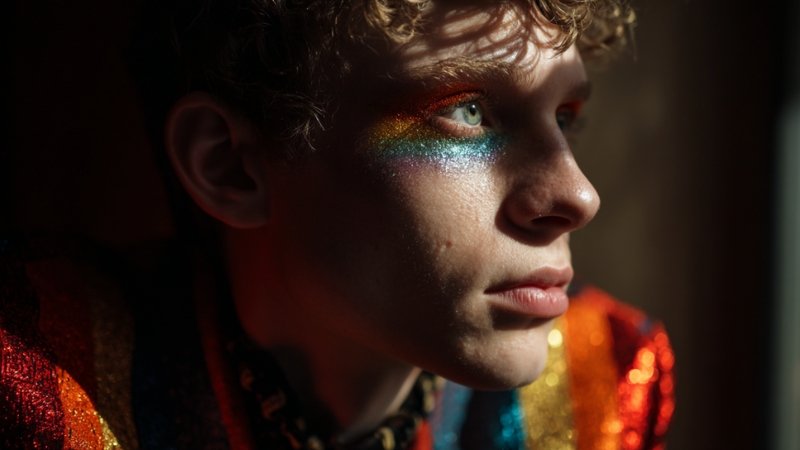In queer and feminist circles across Europe, few terms have sparked as much discussion in recent years as FLINTA, short for Frauen, Lesben, Inter, Nicht-binär, Trans und Agender.
Originally introduced in German-speaking activism, the acronym was meant to broaden the definition of “women’s” spaces, making room for anyone marginalized by patriarchal and gendered power structures.
It promised inclusivity, a new language for a new generation of feminism that went beyond biological definitions of womanhood.
But like most well-intentioned ideas that move from theory into practice, FLINTA has found itself at the center of debate. Depending on whom you ask, it’s either a radical act of care or a form of quiet exclusion hiding behind inclusive language.
Why FLINTA Was Needed

To understand the tension, it helps to remember why FLINTA emerged in the first place. Traditional women’s spaces, feminist collectives, clubs, or activist groups, were often created to protect women from male violence and domination.
Over time, as awareness of gender diversity grew, activists realized that not all those who experience misogyny identify as women.
Intersex, non-binary, trans, and agender people also face discrimination rooted in gendered power structures. The acronym FLINTA was designed to acknowledge that.
By explicitly naming these groups, it aimed to recognize that gender-based oppression isn’t limited to cisgender women; it extends to anyone who is not part of patriarchal masculinity.
The idea caught on quickly, especially in leftist and queer scenes in Berlin, Vienna, and Zurich. Bars began hosting FLINTA-only nights, activist collectives rebranded themselves as FLINTA groups, and universities began adopting the acronym in event descriptions.
For many, it felt like progress, a language that matched the lived realities of people long left out of “feminist” or “women’s” spaces.
The Promise of Protection
@openlynews What do you think about #flinta ? 🤔 #berlin #lgbtgermany #germany ♬ original sound – TikTok Tips
At its core, FLINTA was never just about semantics. It was a social shield.
Many who organize FLINTA-only spaces describe them as protective environments, places where people who experience gender-based oppression can exist freely, without fear of harassment, judgment, or objectification.
This safety isn’t theoretical. In nightlife, for example, FLINTA events grew out of frustration with club environments dominated by cis men, where unwanted touching, comments, or subtle power imbalances were common.
Creating FLINTA nights meant creating nights where boundaries were respected by design.
As one Berlin-based organizer put it, “It’s not about excluding men, it’s about giving everyone else a space to breathe.”
For participants, these spaces often represent the rare opportunity to express femininity, vulnerability, or queerness without social pressure. In that sense, FLINTA is both a linguistic and cultural response to patriarchal behavior, a community saying, “We deserve a night that’s ours.”
The Tensions Beneath the Surface
View this post on Instagram
But as the acronym spread, so did unease. Some queer people began asking: Who exactly counts as FLINTA?
Take trans men, for example. Are they included because they face gendered oppression? Or excluded because they identify as men?
What about gay men, who may experience homophobia but not misogyny? And what about people who shift fluidly between identities over time? Do they have to “fit” a fixed category to belong?
In some scenes, these questions turned political. Critics argue that FLINTA can unintentionally create new boundaries in the name of inclusion. By defining who can enter a space, it risks solidifying identity categories that queer theory itself once tried to dissolve.
Even the intention behind the acronym, to center those marginalized by patriarchal systems, can lead to contradictions. A cis lesbian, a trans woman, and a non-binary person may all experience gender oppression differently.
Yet under FLINTA, they are grouped as if their struggles were interchangeable. For some, that feels empowering; for others, it flattens lived experience.
A Mirror of Queer Politics
The FLINTA debate reflects a deeper truth about contemporary queer politics: the more inclusive a community tries to be, the more it must define the borders of that inclusivity.
Language has power, but also limits. Acronyms like LGBTQIA+ and FLINTA evolve to capture complexity, yet every addition brings new questions about who’s left out. The tension isn’t just about labels, but about belonging.
In queer nightlife and activism, this sometimes manifests as real conflict. Cis gay men who feel excluded from FLINTA spaces argue that queer liberation was built on solidarity across gender lines. Meanwhile, many FLINTA participants counter that male privilege, even among gay men, can still reproduce the same hierarchies that feminism seeks to dismantle.
Neither side is entirely wrong. What’s happening is a clash between two visions of queer space:
The Role of Language: Tool or Trap?
FLINTA’s power lies in its precision; it names those who have historically been erased. But that same precision can feel restrictive. The question isn’t whether the term should exist, but how it should function.
When FLINTA becomes a gatekeeping tool rather than a framework for awareness, it risks losing its purpose. Some activists are now calling for a shift from identity policing to behavior-based inclusion.
Instead of asking “Who are you?”, they suggest asking “How do you show up in this space?”
That subtle shift changes everything. It reframes exclusion around behavior, dominance, harassment, land ack of respect, rather than identity.
A cis man who understands boundaries might belong in such a space more than someone who fits the acronym but disregards consent.
The Future of FLINTA

As Europe’s queer and feminist movements mature, the conversation around FLINTA continues to evolve. Some groups have already started adopting new terms, like FLINTAQ+, adding “Queer” to acknowledge broader experiences.
Others are returning to older frameworks that focus less on identity categories and more on shared values of respect, consent, and equity.
What remains clear is that FLINTA opened an essential conversation, one about whose safety is for, and who defines it. The acronym might change, but the goal behind it endures: to carve out spaces where those affected by gendered oppression can live without fear.
In the end, perhaps the most empowering thing about FLINTA isn’t the letters themselves, it’s the dialogue they’ve started. They force us to ask uncomfortable but necessary questions about power, belonging, and the real meaning of inclusion in queer life.

